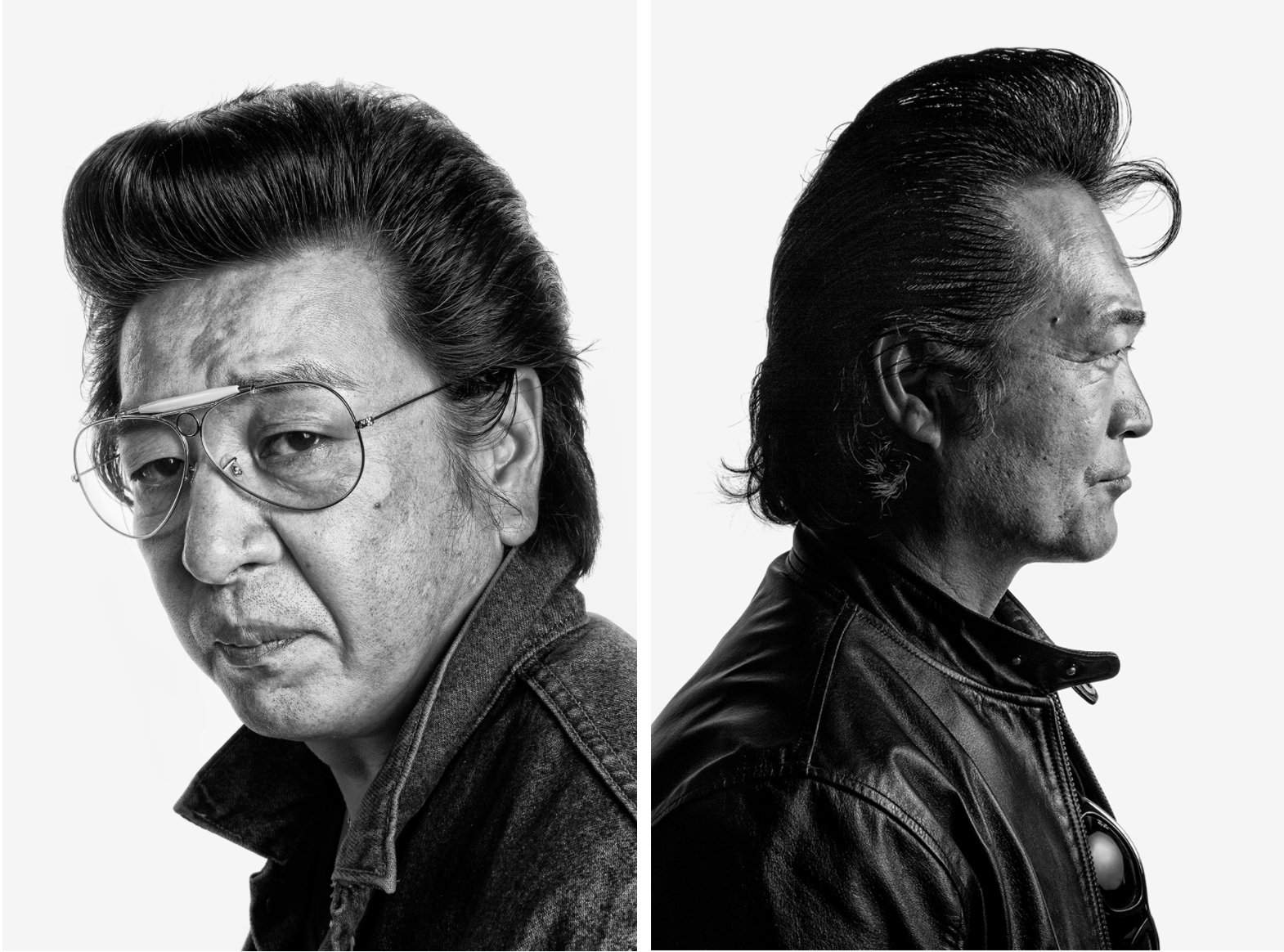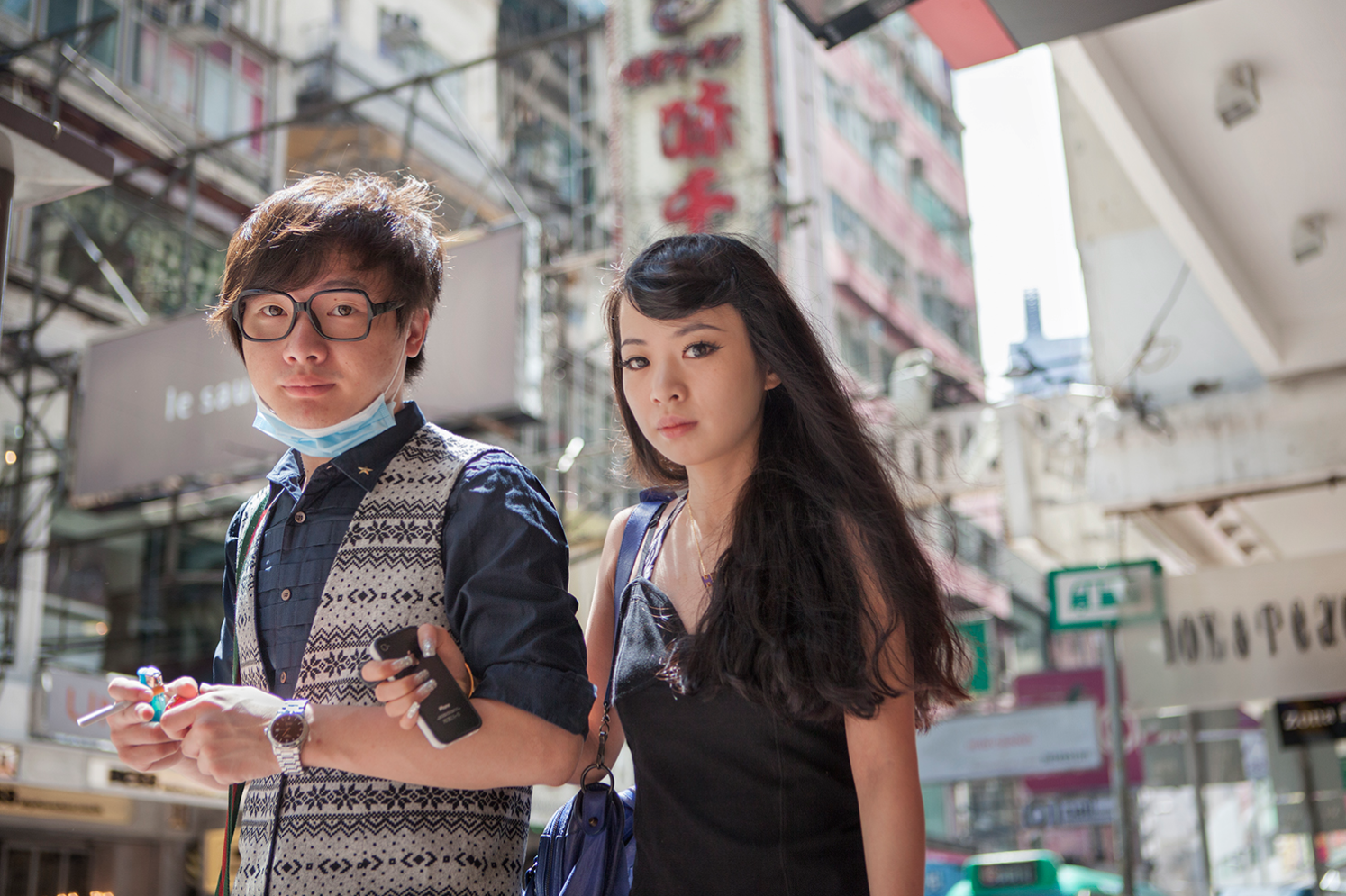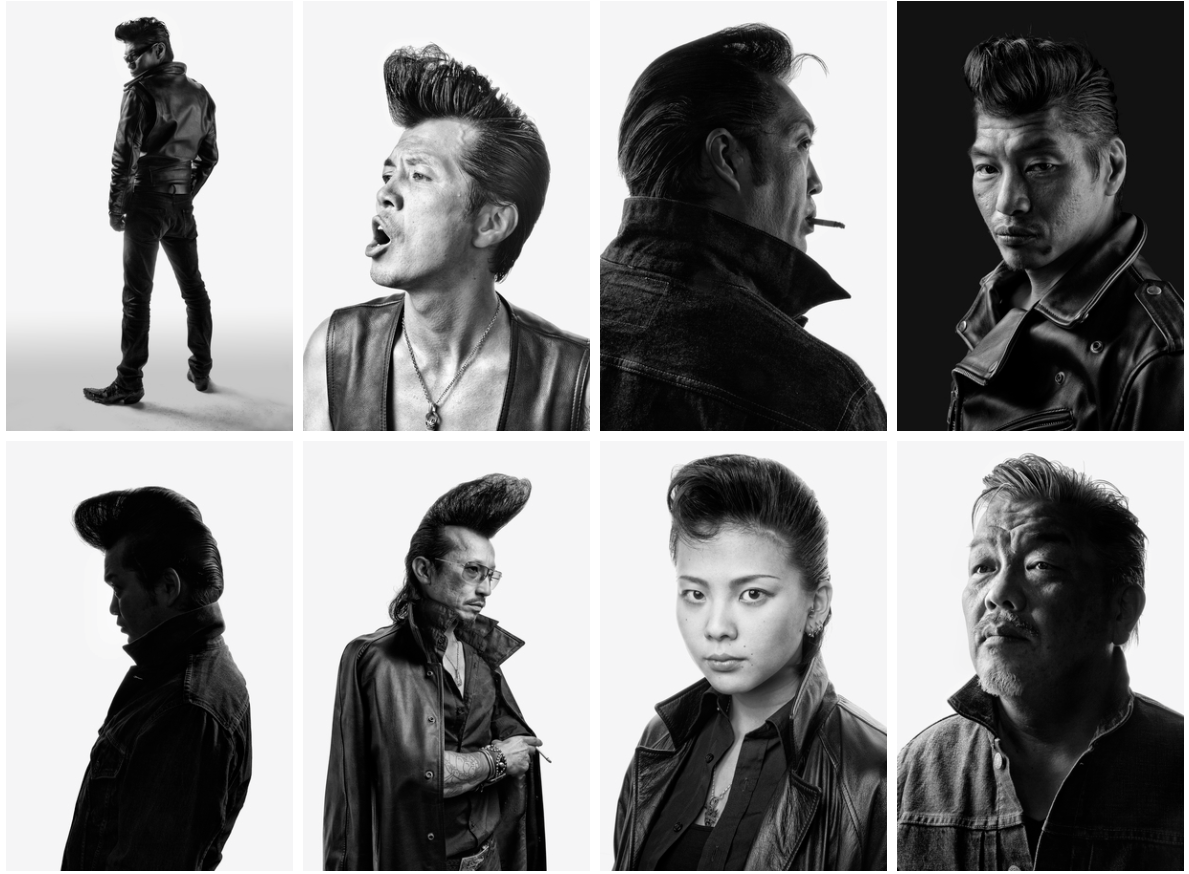LIKE MANY GREAT PHOTOGRAPHERS, Denny Renshaw seems to often find himself in the right place at the right time. I spoke to him from his New York City studio about his career as a photographer and his fantastic series on Tokyo Roller-Zoku.
Sixtysix: Tell me about the path that led you to becoming a photographer, and specifically a portrait photographer.
Renshaw: As a teenager, I played around with photography, mostly pictures of friends, skateboarding and a few landscapes. Later while in college I showed some images to my friend Christopher Miner who suggested I take a formal photography class with Baldwin Lee. Lee is an amazing photographer and was a fascinating teacher who had studied under Minor White and Walker Evans, and was also Evans printer for a time. It was during this time in college that I became interested in what a face can tell in an image and both the depth and difficulty of those images. I had a college radio show and in addition to my art photography I began going to concerts and shows and using my backstage access to create portrait sittings with celebrities using a 4×5 view camera I had borrowed from school. Those portraits led to me being asked to do portrait work in New York City while still in school in Tennessee, so soon I moved to New York.
Portraits have always fascinated me as a window into the hearts and lives of the subjects and I enjoy creating images with characters that tell a small piece of a story in the viewer’s mind.

Toky Roller-Zoku Gangs by Denny Renshaw.
Sixtysix: I’ve read a bit about how you got in touch with the Roller-Zoku, but I’m fascinated to hear more! How did you end up meeting your subjects?
I grew up in Jackson, TN, the birthplace of Rockabilly music, so naturally when I encountered the Roller-zoku on my first trip to Japan in 2009 I was curious. I was instantly fascinated by the Rockers’ obsession with 50’s Rock and Roll, their swagger, their sense of cool and their seemingly dangerous attitudes.
I was fascinated by the Rockers’ obsession with 50’s Rock and Roll … and their seemingly dangerous attitudes.
In 2013 I took another trip to Tokyo and created my first Roller-zoku photographs. On the last day of my trip I made about 8 solid portraits of Rockers and then I got on a plane back to New York. For the next two years I thought about the images and how I wished they were a series, but 8 photographs of 5 subjects seemed too little. So, in October of 2015, with no plans or contacts (or even use of the Japanese language) I stepped out in faith and returned alone to Japan for three weeks to make these Roller-zoku images into a series.
- Tokyo Roller-Zoku by Denny Renshaw.
- Tokyo Roller-Zoku by Denny Renshaw.
I got lucky. My second day in Tokyo I met greasers carrying guitars through the crowd at Shibuya crossing (the world’s busiest intersection) and somehow got invited to a birthday party. There I met Pitpi, former singer for the important 70’s Japanese rockabilly band The Cools. The next day I went to the Rockers in Yoyogi Park with my set and an assistant ready to shoot only to be told “Not today… We really like your photographs… come back another week, we will do it then”, so I did. I met more subjects when I was invited to a Black Shadow show on the outskirts of Tokyo. The band sat me down in front, just a few feet away from their microphone stands, at a table with what must have been an 80-year-old Japanese man in a sharp suit and tie. Soon the band came out looking intimidating, clad in black leather with three foot pompadours while sounding like a mix of Buddy Holly and Motörhead. A minute into the show there was a Greaser feeding frenzy dancing in front of the stage; leather jackets, pompadours and cigarettes hanging out of their mouths as they danced. Suddenly during the loud flurry of guitars, the same guitar player that bought me a drink earlier spit a fireball into the air just off my left shoulder, which briefly set the ceiling on fire. I checked to see if I still had arm hair and then looked over at the 80-year-old man to my right to see if he was as shocked as me. He calmly smiled and raised his whiskey as a toast as if we were quietly sharing a drink on his front porch.
The same guitar player that bought me a drink earlier spit a fireball into the air just off my left shoulder, which briefly set the ceiling on fire.

Hong Kong, 2011 by Denny Renshaw.
Sixtysix: What are you currently working on?
The Street Photography project I am engaged in could be a lifelong endeavor. I work on it in New York City and California in my spare time, and whenever I can travel.
Aside from a few commercial endeavors, I am considering an invite to return to Japan to make more images for the Roller-zoku series. The work has been well received by the subjects and I am curious if I can take it further.
Sixtysix: You’ve said, “All serious street photographers follow their own set of rules.” I found this fascinating, because I find all creatives end up creating their own set of boundaries. What is your “rule setting” process like?
Artists’ personal rules are first dictated by their own perception of good taste.
The rules for my street photography are far different from my rules as a portrait photographer. Because the phrase “street photography” has a few interpretations, I state my personal rules to describe intent. I feel classic street photography depends on a sense of truth in order for it to exist in the same genre with older traditional Street works. To be part of that genre I want to create candid public images and I want my images’ post process to emulate what could be done in a film enlarger, meaning that it be unmanipulated by the moving of pixels (e.g. Photoshop).
In portrait photography I feel the genre is open to my interpretation and most all rules are shed. My obligation is only to the subject’s spirit and the subject is a participant in that process.
Sixtysix: What’s a favorite piece of design in your home? Where did you get it, and why do you love it?
Let’s see, recently I renovated and moved into a prewar apartment here in Brooklyn and I was able to do a lot of things I’ve always wanted to do like finally getting a Walker Evans print from the Library of Congress, I’ve always wanted to do that. But a simple thing that comes to mind that might be unexpected is a front door peephole I bought to fill the empty hole on my front door where the old one had long since gone missing. It’s a vintage brass Art Deco peephole with a mirrored front and a swinging metal cover with a latch on the back that clearly reads “George W. Ackerman, Inc” and the patent number. George W. Ackerman was a photographer who worked for the U.S. government in the 20’s and 30’s mostly photographing rural life in the America. He also held a patent on the design for this door peephole with a sliding cover. The mechanics of the back and it’s latch reminds me of old view cameras like the one I used to use and Ackerman surely knew. Seeing his name on my door as I leave home is also a funny reminder of his old black and white photographs.
Name three of your favorite contemporary photographers.
The people I think about often are too many to list!
Robert Frank: The way he makes each image into poem. When I travel abroad I often think of Frank’s time in Peru traveling alone without speaking the language. I find this way of traveling can be very interesting and didactic for seeing.
Philip-Lorca diCorcia: Of course his portraits are phenomenal. I quit shooting Street Photography when I first saw his book Streetwork. It was too good. Although he used flashes in his work, it was the first time I saw light used so well in Street Photography. It was years before I had developed enough as a photographer to see the natural light and create Street images again.
William Eggleston: Aside from his color, and his sense of place, and being a fellow Tennessean, Eggleston played piano for (the band) Big Star. Who else can say that?





